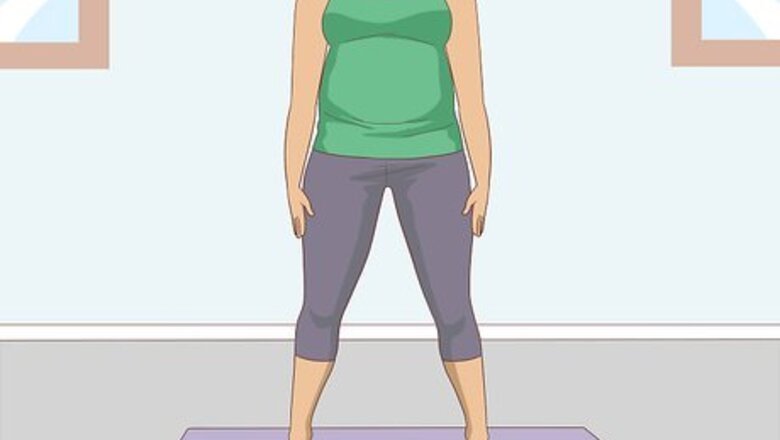
views
X
Trustworthy Source
American College of Obstetricians and Gynecologists
Professional association of OB/GYNs focused on education and public outreat initiatives
Go to source
Squatting offers a happy medium, and helps keep you toned without overworking your body. You can try different squats throughout your pregnancy, as long as you’re taking the proper precautions.[2]
X
Research source
First Trimester: Bodyweight Squat
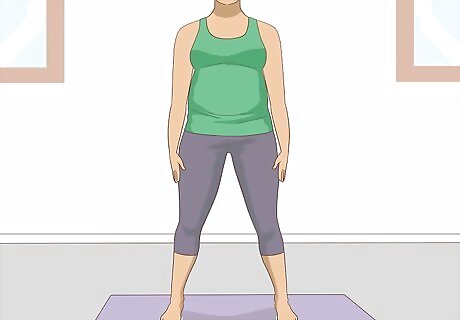
Stand up straight with your feet separated hip-width apart. Find an open area where you can move around and squat comfortably. Keep your feet in line with your hips, which helps keep you balanced throughout the squat. This is a great squat to try during your first trimester. In later trimesters, it may be easier to do squats with exercise equipment, like a fitness ball.
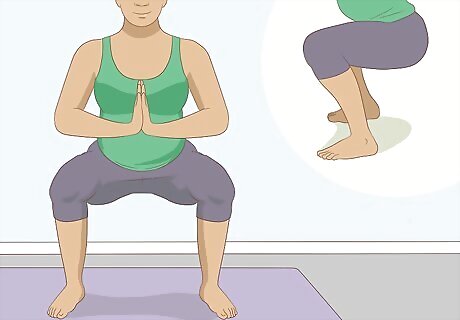
Lower yourself as though you’re sitting in a chair. Pull your hips back as you start squatting, as though you’re preparing to sit down in a chair. Continue lowering your hips until they’re parallel with the floor below.
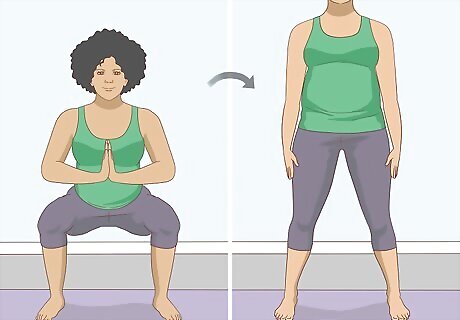
Return to your original position immediately to complete 1 rep. You don’t need to hold this position for very long. Just wait until your hips are parallel to the floor, and then start lifting yourself back up. Go back to your original standing position, so you can do the same squat all over again.
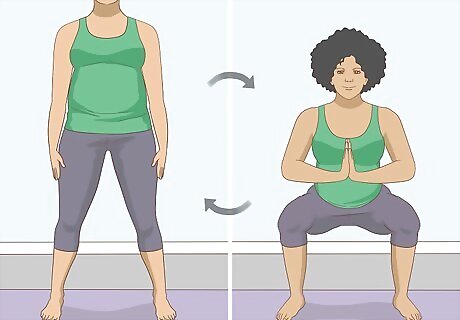
Repeat this squat as many times as you feel comfortable. There isn’t a set number of reps for this exercise, so focus on what feels comfortable for your body. Depending on your fitness level and pregnancy, you may feel comfortable doing more. If you ever feel dizzy, tired, or weak, hit the brakes on your squatting routine instead. Talk to a doctor if you ever feel uncomfortable or ill after squatting.
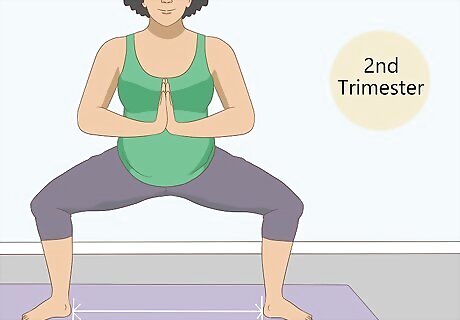
Try a sumo squat if you’re in your second trimester. Sumo squats are very similar to bodyweight squats, but require you to stand with your legs very far apart and your toes pointed out. Lower yourself until your knees are almost at a 90-degree angle, then lift yourself back up to a standing position to complete 1 rep. It may help to hold your hands together while you do this squat. The sumo squat is a happy medium between the bodyweight squat and the deep squat.
Second Trimester: Fitness Ball Squat
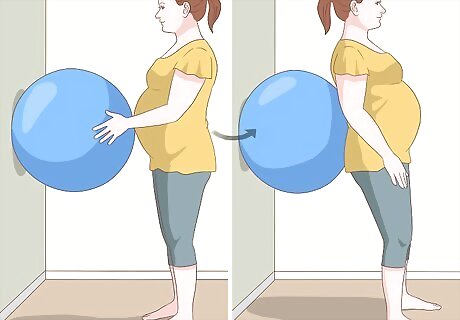
Hold a fitness ball against the wall in line with your belly button. Grab a large exercise or stability ball, which will help take the pressure off your knees as you exercise. Stand facing the wall, with the exercise ball placed along your belly button. Once the ball is lined up, flip around so your back is touching the ball, and you’re no longer facing the wall. Larger exercise balls work especially well for this type of squat. This is a good squat for the later stages of your pregnancy.
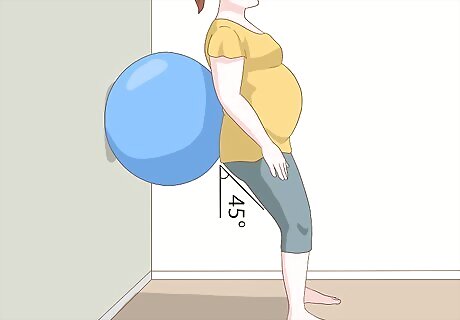
Stand against the ball with your legs angled in front of you. Step out with your legs, so they both form a 45-degree angle away from your back. The ball is designed to make the squat easier on your knees, so you “roll” into a squatting position.
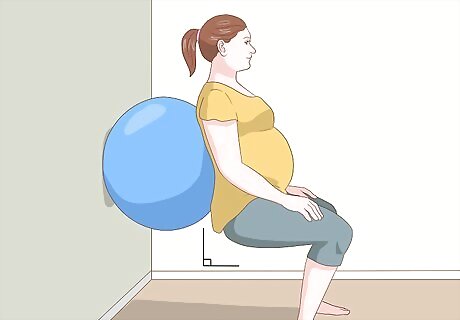
Squat down while supporting your back with the ball. Lower yourself into a squatting position, using the ball to guide you as you go. Aim to keep your hips at a 90-degree angle, so you can stay balanced. Just do the regular squatting motions that you’d usually do. The exercise will follow along and make it easier to squat.
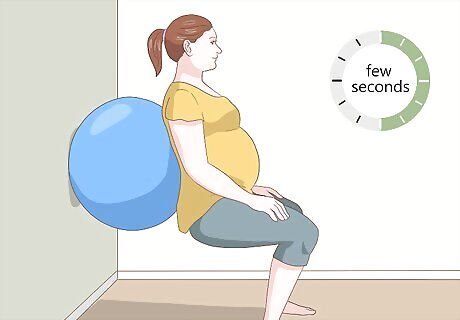
Hold the squat for a couple of seconds. You don’t need to hold the squat for very long—just a few seconds, or whatever is comfortable for you. Do your best to keep your hips at a steady right angle while you hold yourself in place. This squat is meant to give you a small workout, but not make you feel tired, achy or dizzy. If you ever feel physically uncomfortable while performing a squat, stop right away.
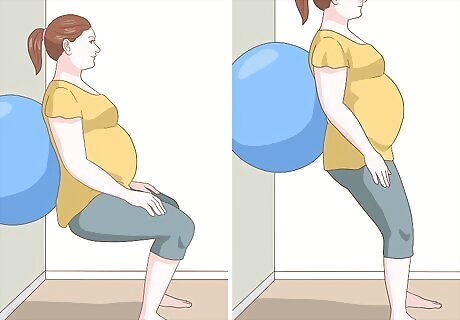
Roll the back back up to reset the squat. Return to your original position, leaning on the ball for support as you go. Continue rolling up until you’re standing in your original position with your back straight and your legs extended forward. This counts as 1 rep of the squat. There’s no set number of reps you have to do—focus on what’s comfortable for you and your body, and continue accordingly.
Third Trimester: Deep Squat
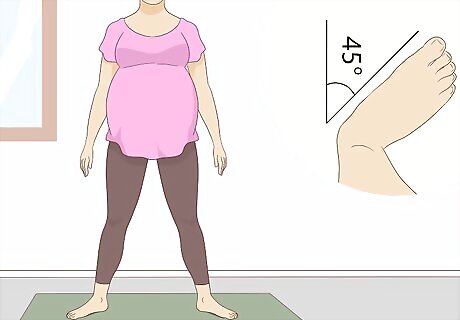
Stand up straight with your toes pointing out. Find a place where you squat comfortably without feeling confined. Start in a standing position, with your toes pointing outwards at about 45-degree angles. This makes it easier to keep your pelvis open as you squat. For maximum comfort, you may prefer to do this exercise on a yoga mat. This squat is a great option for the later portions of your pregnancy. While it may seem intense, it’s a good way to engage your pelvic floor muscles.
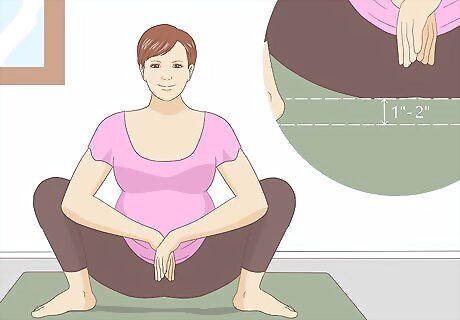
Lower yourself down so you’re almost sitting on the floor. There’s no need to rush—just lower yourself at a slow, comfortable pace until you’re almost sitting on the floor below. Try to hover at least 1 to 2 in (2.5 to 5.1 cm) above the floor to complete your deep squat. At this point, your feet, knees, and legs will be pointed outwards, keeping your pelvis open.
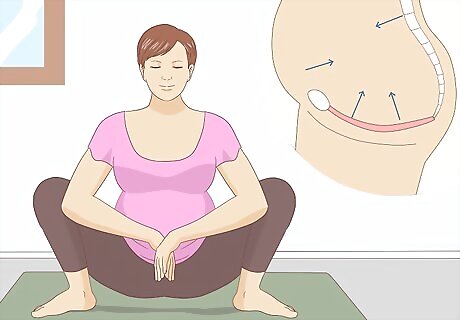
Tighten your pelvic floor muscles as you maintain the squat. Keep maintaining the squat position as you make an effort to squeeze your pelvic floor muscles throughout the exercise. To find your pelvic floor muscles, think about the muscles you tighten when you pause while urinating. Keep your pelvic floor muscles tightened for the entire squat.
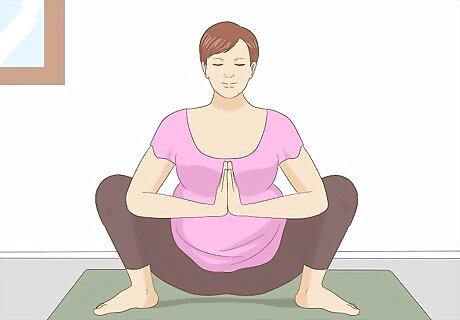
Press your palms together with your elbows facing out. Keep your hands busy by pressing your palms together in front of your chest. You can also hold your hands on top of your knees, if that’s easier.
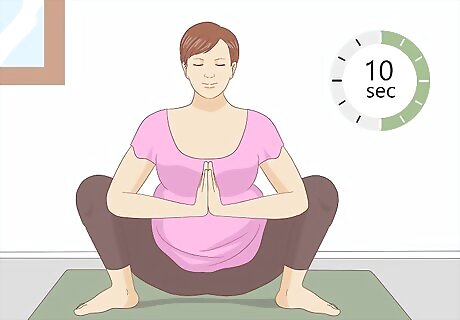
Maintain the squat for about 10 seconds. Count to 10 in your head as you squat, breathing in and out as you go. Pay attention to your body while you hold the squat—if you ever feel uncomfortable or weak at any time, pause in your exercise and talk to a medical professional. You can hold this pose for up to 30 seconds, but only if you feel comfortable.
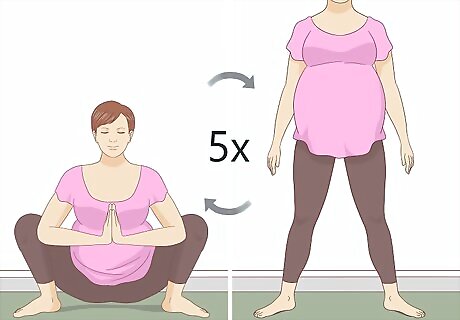
Return to your original position and repeat the squat. Focus on lifting yourself up from your knees, using your arms for support as you stand up straight, which counts as 1 rep. Try doing 5 total reps of deep squats—if you don’t feel strained, you’re welcome to do more reps, as well. It may help to lean on a chair as you’re getting back up. Do your best to relax your muscles as you return to your original position. Try not to hold your breath as you stretch—your body needs oxygen, even if you’re just doing a squat!
















Comments
0 comment